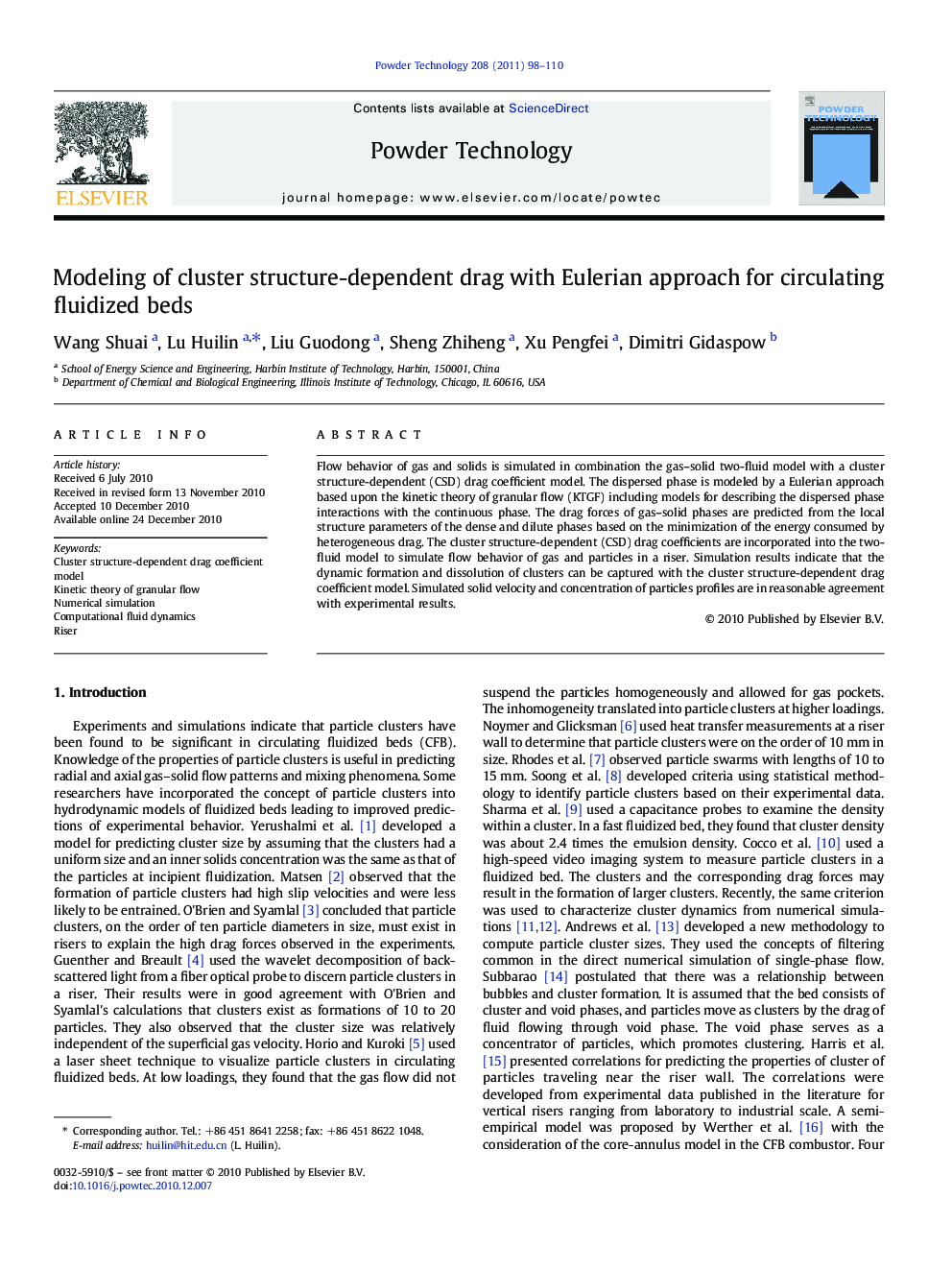| Article ID | Journal | Published Year | Pages | File Type |
|---|---|---|---|---|
| 237930 | Powder Technology | 2011 | 13 Pages |
Flow behavior of gas and solids is simulated in combination the gas–solid two-fluid model with a cluster structure-dependent (CSD) drag coefficient model. The dispersed phase is modeled by a Eulerian approach based upon the kinetic theory of granular flow (KTGF) including models for describing the dispersed phase interactions with the continuous phase. The drag forces of gas–solid phases are predicted from the local structure parameters of the dense and dilute phases based on the minimization of the energy consumed by heterogeneous drag. The cluster structure-dependent (CSD) drag coefficients are incorporated into the two-fluid model to simulate flow behavior of gas and particles in a riser. Simulation results indicate that the dynamic formation and dissolution of clusters can be captured with the cluster structure-dependent drag coefficient model. Simulated solid velocity and concentration of particles profiles are in reasonable agreement with experimental results.
Graphical AbstractThe CSD drag coefficient model A gives the increases in granular temperature, reaches maximum, and then decreases with the increase of solid concentrations. While the Wen and Yu/Ergun drag correlations give the decrease in granular temperature with the increase of concentration of particles.Figure optionsDownload full-size imageDownload as PowerPoint slideResearch Highlights► We propose a cluster structure-dependent (CSD) drag coefficient model. ► We propose a concept of the minimization of the energy consumed by heterogeneous drag. ► Predicted flow patterns by means CSD drag coefficient model A and model B are consistent with experimental observations.
